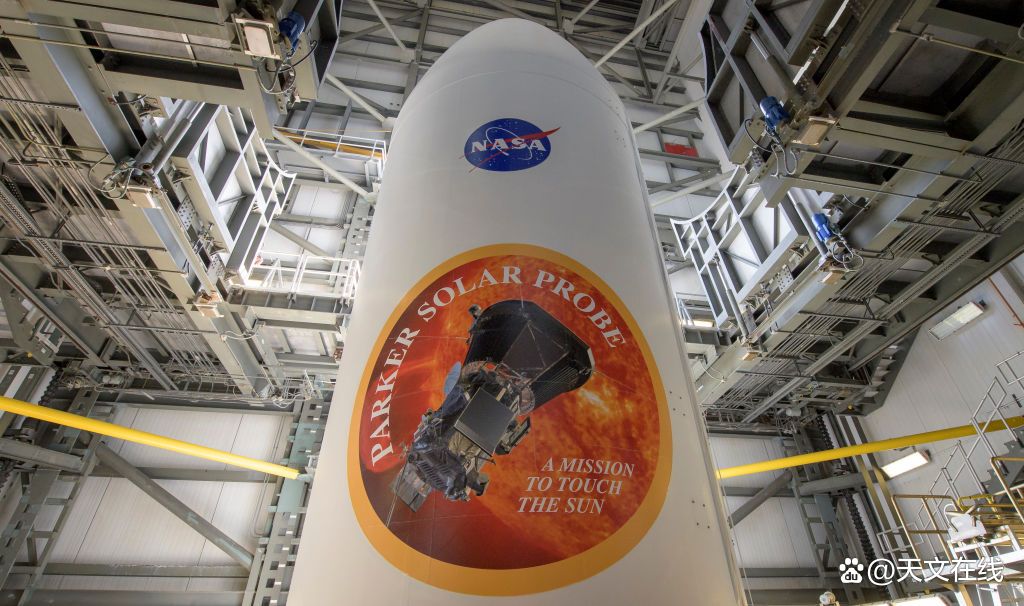Fast, closer, Parker detector, born to the sun
Author:Astronomy online Time:2022.06.24
The National Aeronautics Aviation Agency (NASA) ultra -high -speed Parker Sun detector has just broken its speed record on the sun.
Parker Sun probe sets a new speed and distance record.

An artist study the sun's depiction of the sun. (Picture source: John Hopkins University Applied Physical Laboratory)
A solar observation spacecraft at the National Aeronautics Aerospace Agency (NASA) broke its speed and distance records when it was close to us.
NASA officials said that the Parker solar detector reached the highest speed of 101 miles (163 kilometers) per second at the 10th time solar flight on Sunday, which is equivalent to the dizzy 364621 miles (586,000 kilometers) per hour.
Parker rushed to the sun, trying to better understand how our stars produced "space weather", which affected all things such as satellite operation, astronauts, and then to Aurora. Parker also set a record of the nearest distance. It is only 5.3 million miles (8.5 million kilometers) from the surface of the sun, which is located on the optical layer.

NASA did not announce the record of Parker's break, but from the last close -up flight, we can infer the most likely number. On August 9, Parker was about 6.5 million miles (10.4 million kilometers) from the sun surface, with a maximum speed of about 330,000 miles per hour (532,000 kilometers) per hour.
Today is Sunday!阳️ And the Parker Sun probe is making full use of this day.在 Today, Parker is breaking his record and completed the fastest flight closest to the sun and the fastest.

Near the sun exposed Parker at extreme temperature, for this engineers prepared a unique heat insulation plate (including reflector, foam carbon core, and carbon carbon composite material panel), which was also affectionately called "giant flying disk".
However, what makes engineers unexpected is the large amount of dust near the sun. NASA officials stated in a statement that although the modeling work before launch did not take into account the amount of dust facing the detector, the spacecraft was strong enough to cope with a large amount of dust.

John Hopkins University's Applied Physical Lab Parker Sun Detector Task System Engineer Jim Kingson said in the statement: "The materials and components we designed can withstand the smaller particles of the ultra -high -speed dust impact and the smaller particles generated in the impact. influences."
"We simulate the composition and influence of the dust environment," Kingson added. "Test the reaction of the materials to the dust particles and installed the fault -tolerant vehicle system to keep the Parker solar detector safe in unusual areas."

The task team is expected to continue to break the speed and distance record, especially after Parker pursued higher speeds after the Venus fly over in August 2023 and November 2024. By December 2024, Parker will be nearly 4 million miles (6.2 million kilometers) from the surface of the sun, with a speed of more than 430,000 miles per hour (690,000 kilometers) per hour.

Parker Sun Detector (abbreviated as PSP; previously called solar detector, solar detector PLUS or solar detector+) [8] is a space detector launched by NASA in 2018, which is used to observe the sun crown outside the sun. Activity. [3] [6] [9] It will be close to the sun radius of 9.86 solar radius (6.9 million kilometers or 4.3 million miles) [10] [11]. By 2025, it will reach the closest distance at a speed of 690,000 kilometers /Hour (430 miles/h) or 0.064%of the speed of light. [10] [12]
The project was announced in the 2009 fiscal budget and expected to cost $ 1.5 billion. The spacecraft designed and constructed by John Hopkins's application physics laboratory was launched on August 12, 2018. [2] [13] It is the first spacecraft named for NASA named after the alive, paying tribute to the honorary professor of the University of Chicago -90 -year -old physicist Eugene Newman Parker. [14]

On May 18, 2018, a memory chip containing more than 1.1 million people was loaded on a plaque and was installed under the high -gain antenna of the spacecraft. [15] This chip also contains Parker's own photos and his copy of scientific papers that speculate on the important aspects of solar physics in 1958. [16]
On October 29, 2018, the coordination world time was about 18:04, and the spacecraft became the artificial celestial body closest to the sun. The previous record was created by the Sun God No. 2 spacecraft in April 1976, 42.73 million kilometers (26.55 million miles) from the surface of the sun. [17] At the nearby point on November 21, 2021, the closest distance of the Parker Sun detector was 8.5 million kilometers (5.3 million miles). [18] After the remaining twice flying over the Venus mission, this distance record will be broken.
By: space
Fy: gxmm
If there is related content infringement, please contact the author to delete after the work is released
Reprinted, please obtain authorization, and pay attention to maintaining integrity and indicating the source
- END -
Zhongnan Digital Industrial Park: Leves the new world of computing power of "Digital Hunan"
Hunan Daily, June 18 (all -media reporter Zou Jingfang correspondent Chen Lufang) On June 17, China Telecom Tianyi Yunzhong South Digital Industrial Park in Changsha City, the machine roars, a busy co
Qi! These technologies are no longer "stuck neck"

Core key technologies must not stuck neck. Rocket Academy adheres to self -relianc...